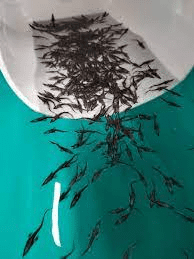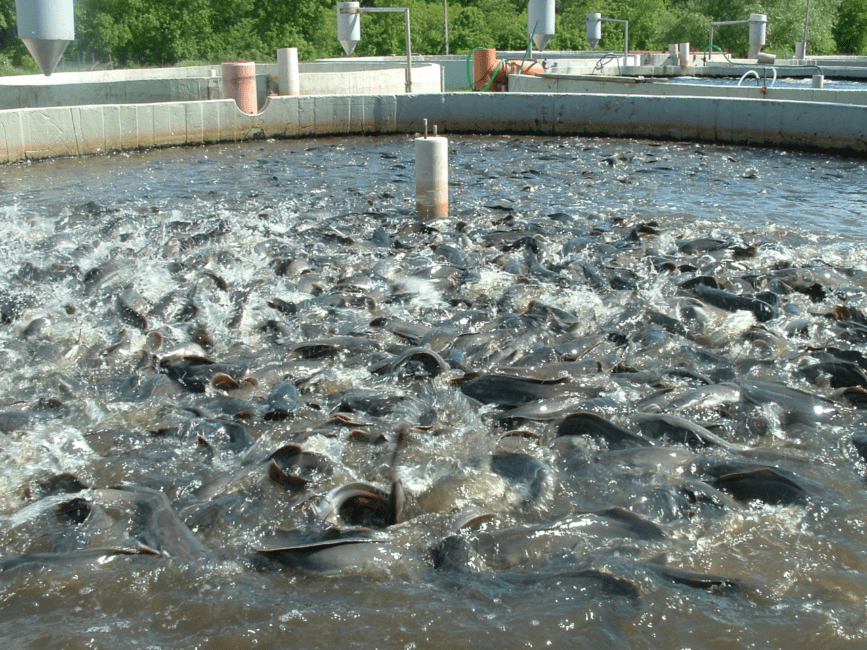Fish farming systems can be classified into different categories most especially based on the exposure to natural climates and influence of vagaries of weather. The three main classifications are: Open system, Semi-closed systems and Closed systems.
Culture techniques are either monoculture which involves the culturing of a species of fish in a culture environment at a particular time, or Polyculture which is the rearing of more than one species of fish in a culture environment at a particular time.
Hatchery is a place where process of producing young fish otherwise referred to as fingerlings is taken place. Hatchery is important to the growth and development of fish farming in order to ensure availability of quality fish seeds that can meet up with the required quantity all the time of the year. Hatchery can be indoor or outdoor.
Read Also: Introduction to Fish Parasites and Diseases
Procedure for Fish Hatching and Management in Fish Farming

Fish hatching and management are pivotal in successful fish farming, blending science with careful, day-to-day practices. As an expert in the field, I’d like to share some insights to help you navigate this fascinating process.
1. Meaning of Fish Hatching
Hatching fish starts with selecting high-quality broodstock, the mature fish used for breeding. This step is crucial as the health and genetics of your broodstock will directly impact the quality of your fry which are the young fishes. Conditioning the breedstock with a nutrient-rich diet ensures they are in peak condition for spawning.
Once the broodstock is ready, inducing spawning can be done naturally or with hormonal treatments. After eggs are laid and fertilized, they must be carefully transferred to hatchery tanks. Here, maintaining optimal water quality right temperature, oxygen levels, and cleanliness is critical. These conditions help maximize the hatching rate and ensure healthy fry.
2. Meaning of Fish Management

Post-hatching, the management phase begins. This involves regular monitoring and maintaining water quality, as fry are particularly sensitive to their environment. It’s also essential to provide appropriate feed, often starting with live food like rotifers or brine shrimp, gradually transitioning to formulated feeds as the fish grow.
Stock density should be managed to prevent overcrowding, which can lead to stress and increased disease susceptibility. Regular health checks and prompt response to any signs of disease or stress are necessary to maintain a healthy population.
As the fish grow, periodic grading (sorting by size) helps ensure uniform growth rates and reduces competition for food. Good record-keeping is also vital, tracking growth rates, feed conversion ratios, and health data to inform future management decisions.
Below are 18 steps procedure to efficient African catfish breeding:
Step 1: Identify and separate the sexes.
Step 2: Select and check for a gravid female i.e. female with ripe eggs.
Step 3: Weigh the Female Fish Dried African Catfish Pituitary Gland, Grind the pituitary using a pestle until it becomes powder, Add 1ml saline solution. Collect the solution and Inject the female fish using an hypodermic syringe.
Step 4: Prepare the female Catfish for injection. The fish should also be injected above the lateral line with the needle at 45 degrees to body of the fish.
Step 5: Isolate the Injected fish in a Comfortable, big bowl and wait for 10 to 12 hours.
Step 6: Prepare to strip the fish, Set up your incubator.
Step 7: Bring the Fish out after 10 to 12 hours gently and cover the head with a clean, moist towel.
Step 8: Wipe the body of the fish dry using a dry, soft towel.
Step 10: Weigh the stripped eggs. This helps to have an idea of the expected fry.
Read Also: Introduction to Fisheries Ecology
Step 11: Bring the Male out, kill it, turn the belly up and cut it open.
Step 12: Remove the milt sac.
Step 13: Cut the testicles into bits to release the sperm.
Step 15: Pour the mixture of saline solution and milt to the stripped eggs in the bowl and mix thoroughly and add fresh, clean, water. Continue mixing to prevent eggs from sticking together.
Step 16: Spread the eggs inside the incubator on the Spawning sponge. The spawning sponge is completely immersed in water. It however sits on the spawning net which keeps it suspended in the water. The net is held in place by pegs.
Step 17: Wait 20 to 36 hours. After 20 to 36 hours, remove the sponge and spawning net. By now the fry would have emerged from the hatched eggs and would have gone to the bottom of the net.
Step 18: Observe the newly hatched eggs, with yolk still visible and attached to the fry.
In summary, the major practicable means of providing enough quality seed for rearing in confined fish enclosure waters such a fish ponds, reservoirs and lakes is through artificial propagation methods.
This is because there is steady growing importance of fish farming which has compelled improvements in the technologies necessary for securing the initial and basic requirements for productive aquaculture.
In essence, successful fish hatching and management require a balance of scientific knowledge and practical skills. By staying attentive and responsive to the needs of your fish at each stage, you can achieve a thriving fish farm.
Read Also: Effects of Hazardous Substances on Water and Aquatic Life





